Studying the environmental effects of drainage of heavy metals from tailings of abandoned mines in the Nordgruvefeltet mining field near Røros
I took my doctoral degree at the Department of Zoology, Norwegian University of Science and Technology (NTNU) between 1996 and 2000. During these years I was studying how brown trout (Salmo trutta) living in metal-contaminated environments are affected by heavy metals such as cadmium (Cd), copper (Cu) and zinc (Zn). Two rivers affected by acid mine drainage in the Nordgruvefeltet mining field in the Røros region, central Norway, were selected as study locations. Rugla is mainly contaminated by Cu originating from Muggruva tailings, whereas Naustebekken contains high levels of Cd and Zn due to runoff from the water-filled Fjellsjøgruva. The runoff levels in these subalpine rivers vary a lot annually, depending on snowmelt and intensity of rainfall.
I examined accumulation of these metals and metallothionein (MT) levels in gills, liver and kidney in trout captured at low water levels and during runoff peaks in these rivers. MTs are metal-binding proteins that help detoxifying metals in cells. Trout were also translocated during the runoff episodes. With this approach I was able to compare two different trout populations, and to investigate whether they handle and detoxify metals differentially depending on the metal composition in their native river. These studies showed that accumulated concentrations of metals and the levels of Cd/Zn MT and Cu MT fluctuated markedly throughout the year, and that these fluctuations depended on the water runoff levels in the rivers. Accordingly, the dissolved fractions of metals also increased during runoff episodes, suggesting that brown trout are more vulnerable to metals during runoff episodes. These experiments revealed that MTs are very important proteins which act as a first defense against metal toxicity in the gill tissue. Brown trout has two isoforms of MT, and their metal binding affinity seem to differ. The observed differences in metal binding of MTs are probably not primarily due to the MTs themselves, but rather due to different transcriptional regulation of the MTs or the possible participation of other biomolecules. When MTs were evaluated as biomarkers, it turned out that Cd/Zn MT is a good biomarker for Cd exposure in liver and kidney, but not in gills. On the other hand, Cu MT seems less suitable as a biomarker for Cu exposure in the studied brown trout populations.
On this page some photos taken during the field work in the Røros region, Sør-Trøndelag, and from the search for other possible study areas in 1996, has been displayed.
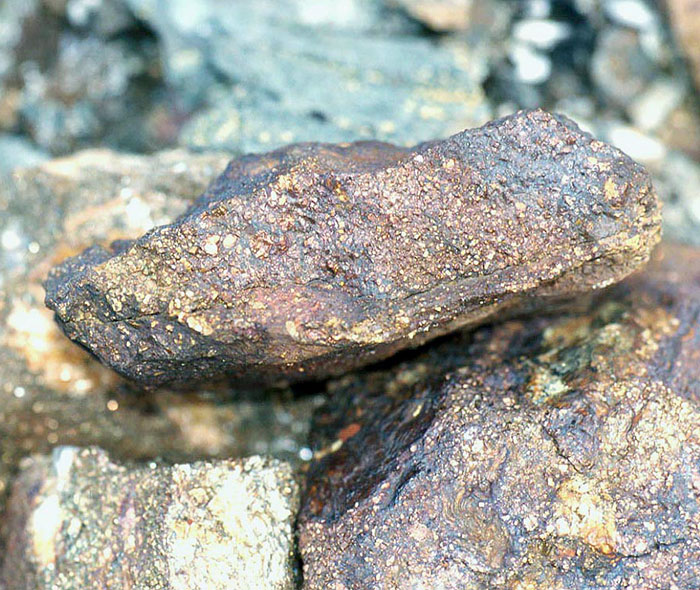
Weathered rock with oxidized sulfide minerals from a spoil tip

Fjellsjøgruva (photo 1997), situated between Store and Lille Fjellsjø. This Cu / Zn mine in Nordgruvefeltet was operated between 1953 and 1957 for a Zc blende ore

Drainage from Fjellsjøgruva into Lille Fjellsjø. With very high concentrations of Zn and Cd
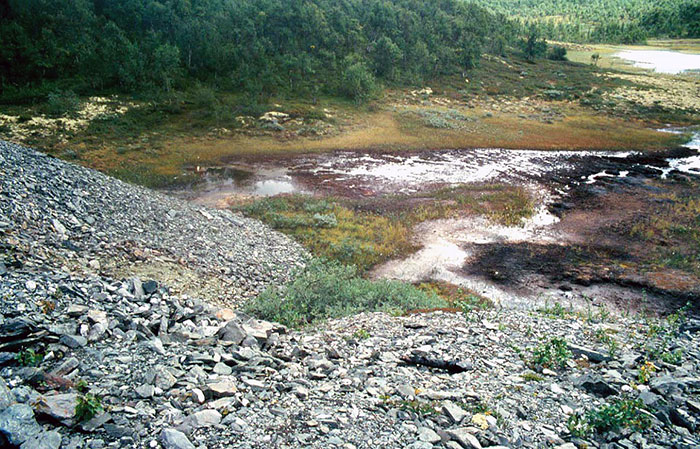
Fjellsjøgruva drainage enriched with Zn and Cd (1997)

Naustebekken, running from Lille Fjellsjø to Orvsjøen. This river contained high levels of Zn and Cd due to discharges from Fjellsjøgruva. We used double fyke eel traps (picture) and electro-fishing to catch brown trout
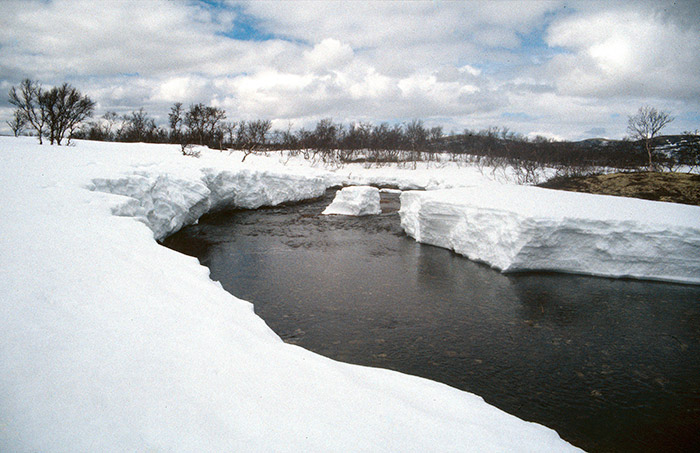
Naustebekken late winter 1997

Carrying equipment from Kongens gruve to Naustebekken early spring 1997. The road was open only to Kongens gruve

Setting up a data logger for monitoring water runoff levels in the river

Pål Gundersen, a collaborating chemistry PhD student who worked with metal speciation in the same rivers

Electro fishing in Naustebekken autumn 1997
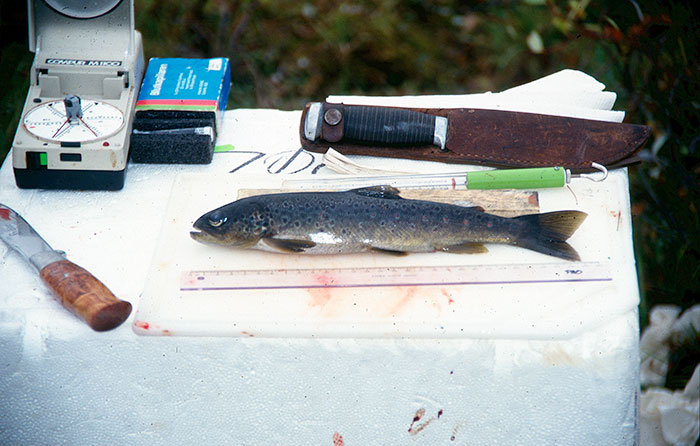
Typical brown trout caught in Naustebekken
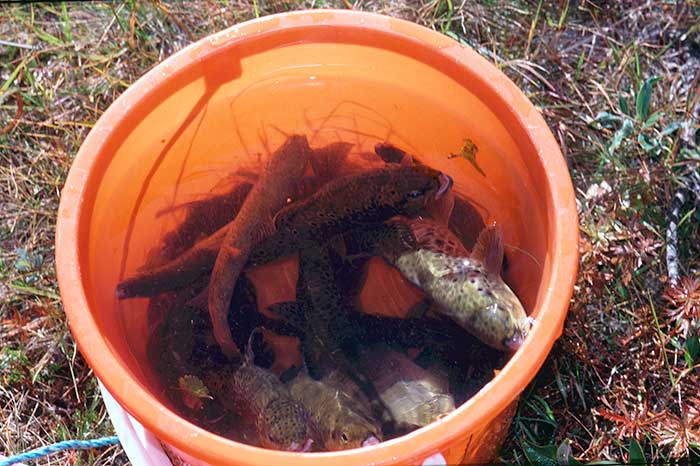
Successful electro-fishing!
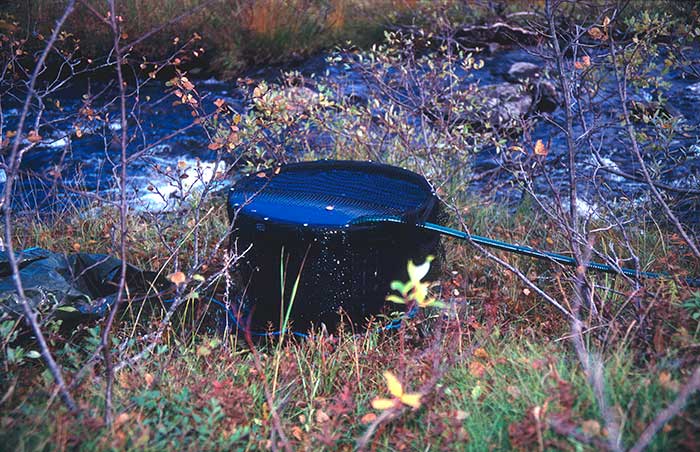
Fish storage tank in Naustebekken 1998

Field work 1997. Orvsjøen receives heavy metals from at least three mines in the area, Kongens gruve, Fjellsjøgruva and Christianus Sextus gruve, and, as a results contains no fish (a dead lake)

Orva river (photo 1997), running from Orvsjøen into the Glomma river. Orva is heavily impacted by acid mine drainage and ferric ion (Fe3+) precipitation (red-colored rocks) and contains no aquatic life
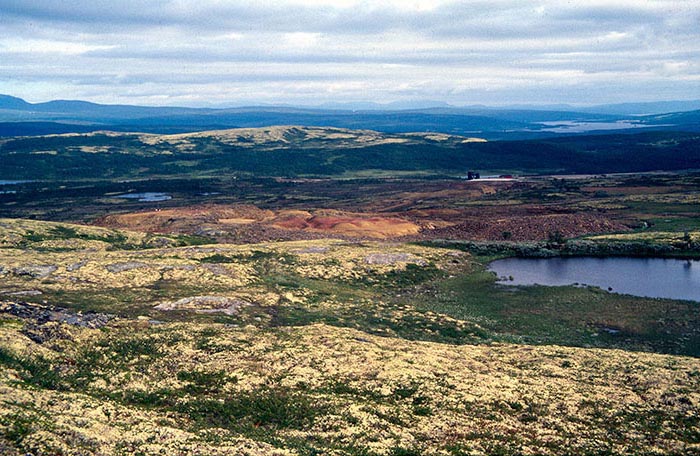
Typical mountain vegetation in the Nordgruvefeltet area with Kongens gruve in the background

Spoil tips at Kongens gruve (photo 1997). Kongens gruve, a Cu sulfide ore, was operated from 1736 to 1945
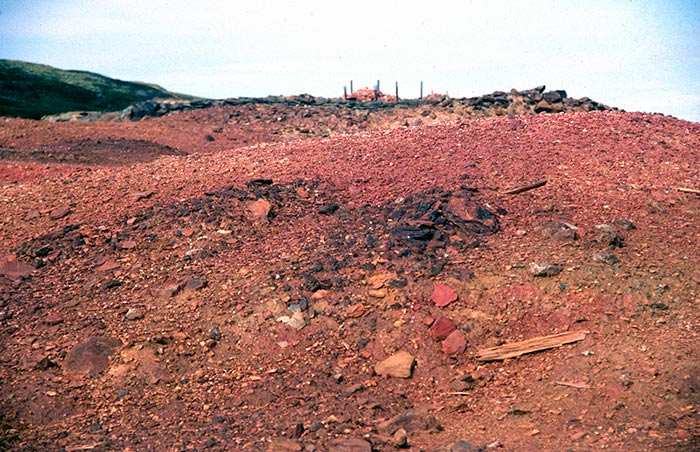
Ferric iron oxidation. Kongens gruve spoil tips
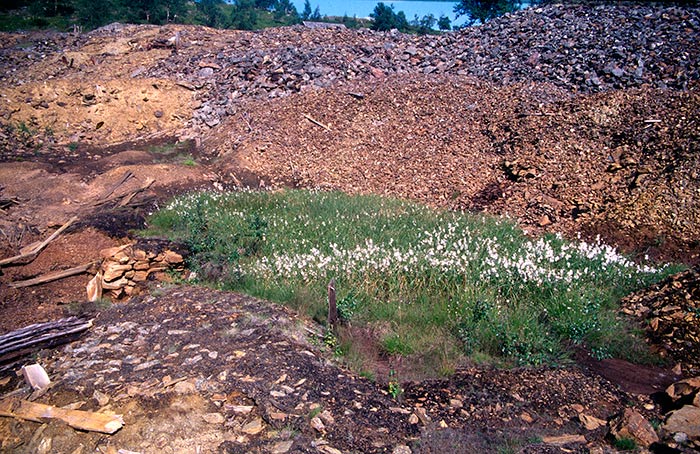
Scheuchzer's cottongrass or white cottongrass (vanlig snøull, Eriophorum scheuchzeri) growing on the tailings at Christianus Sextus gruve
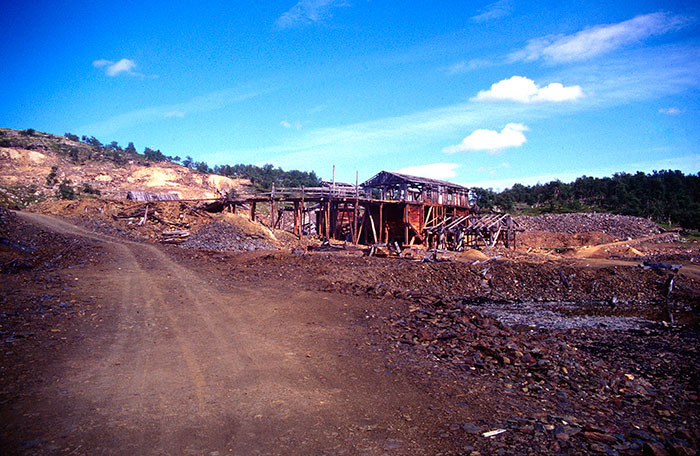
Christianus Sextus gruve. This Cu sulfide ore was operated in two periods between 1723 and 1940
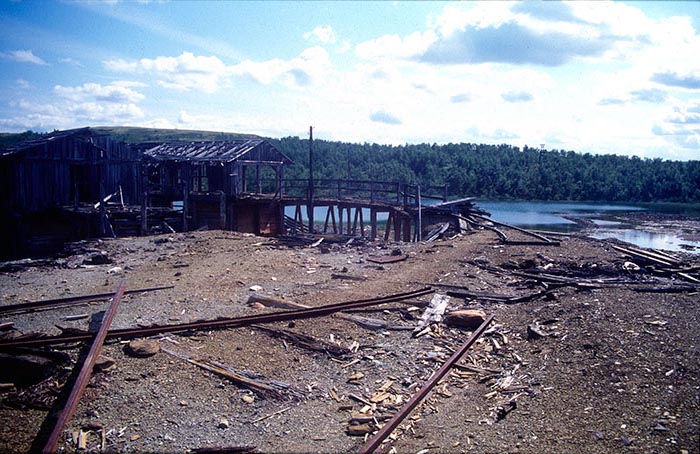
Christianus Sextus gruve (taubanestasjonen). Leftovers of the old mine cable railway system used to transport crushed bedrock
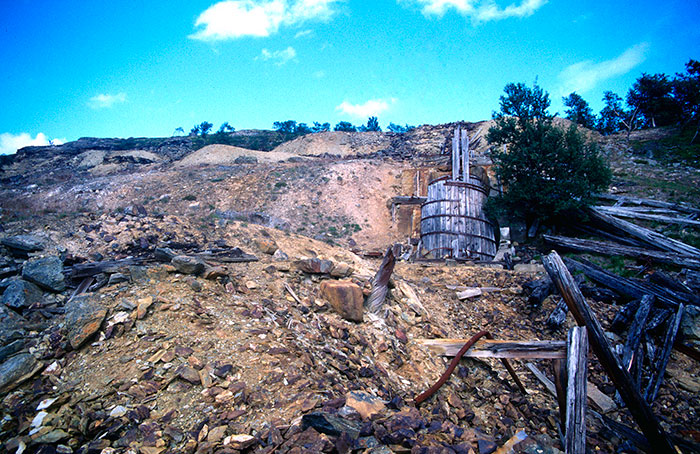
Christianus Sextus gruve
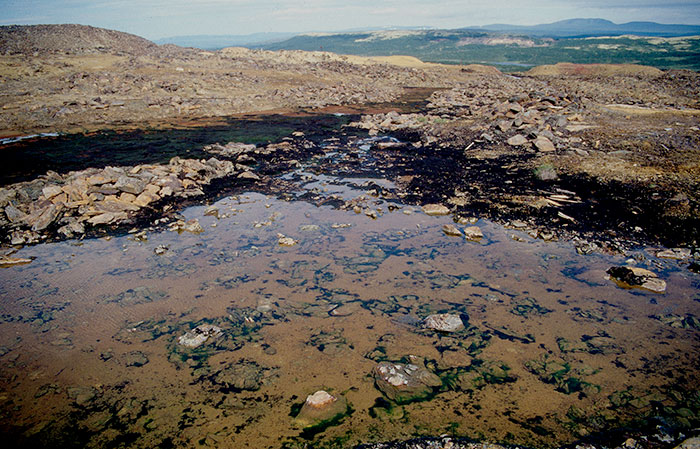
Christianus Sextus gruve acid mine drainage
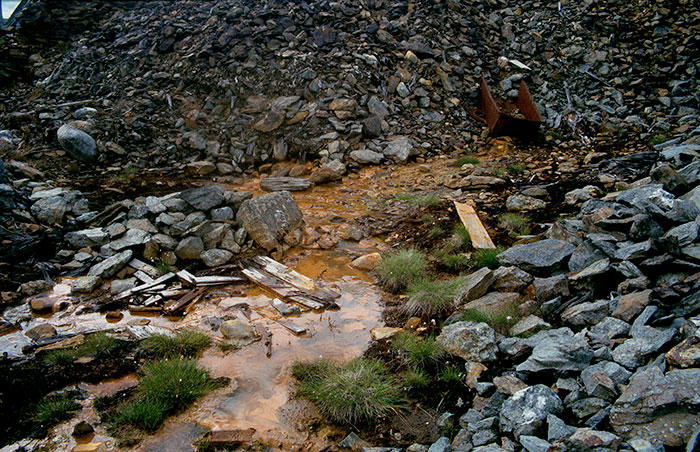
Christianus Sextus gruve acid mine drainage. When this water reach the nearby creeks, rivers and lakes the fish is not happy!
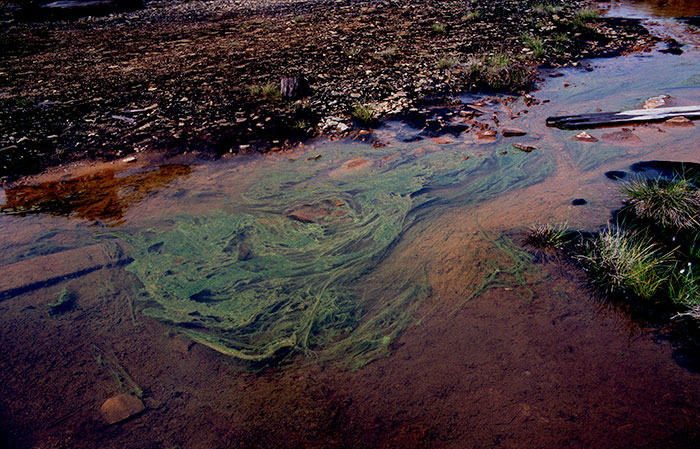
Christianus Sextus gruve acid mine drainage with green algae thriving
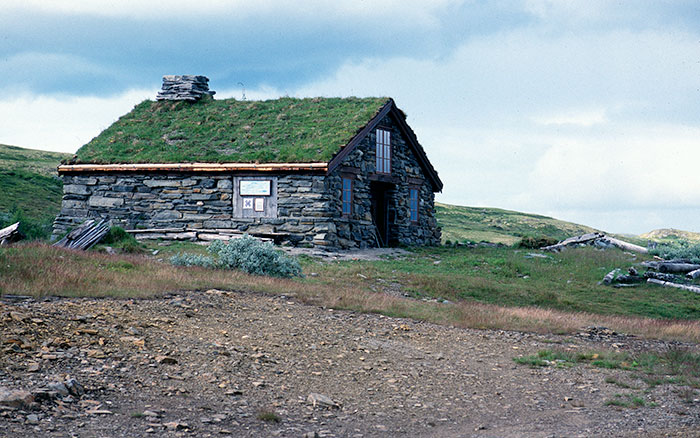
Muggruva cabin, Holtålen, Sør-Trøndelag. Muggruva, a Cu and Zc ore, was operated by Røros Kobberverk from 1774 to 1919. Acid mine drainage water from Muggruva, enriched with Cu, contaminates the Rugla river in the valley below

In an attempt to reduce acid mine drainage from Muggruva, crushed limestone (carbonate neutralization) was mixed into the creek in 1998
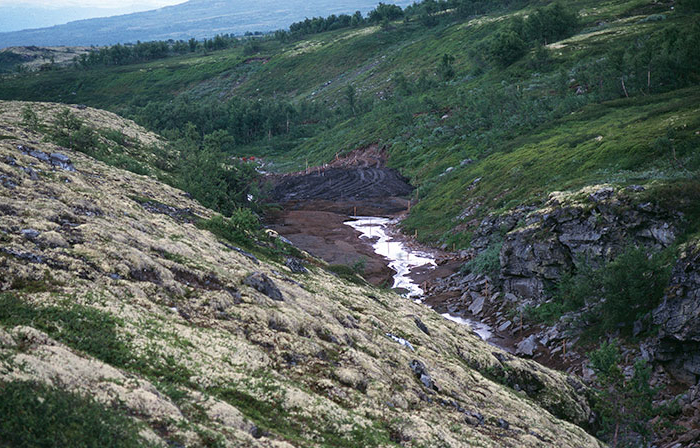
Muggruva drainage during the recovery work in 1998

Muggruva drainage with limestone (1998)
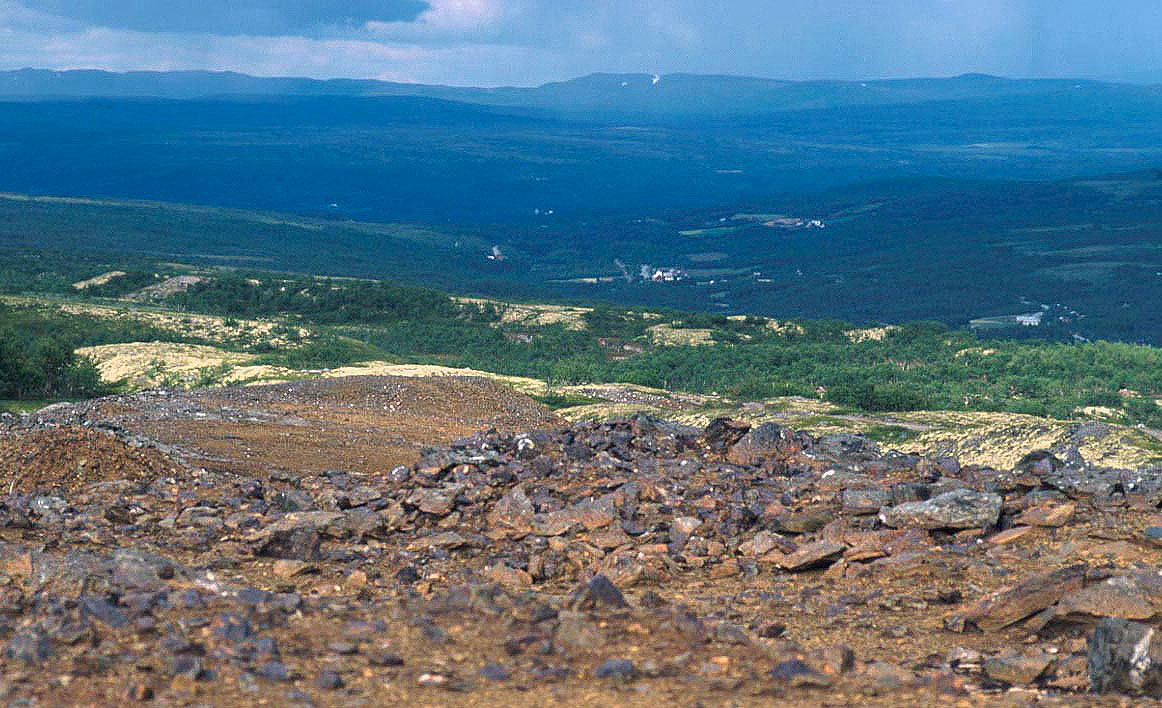
View from Muggruva toward Rugldalen. Mine tailings in the front (1998)
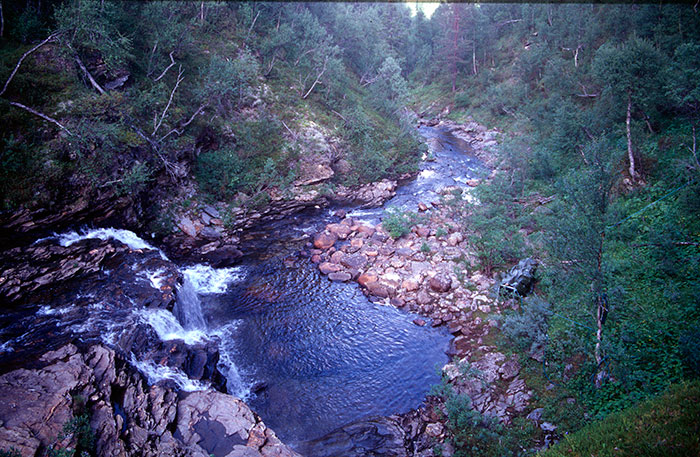
Rugla river, in Holtålen municipality, drains into the Gaula river north of the water shed. Here photographed at low water level during summer (1997)
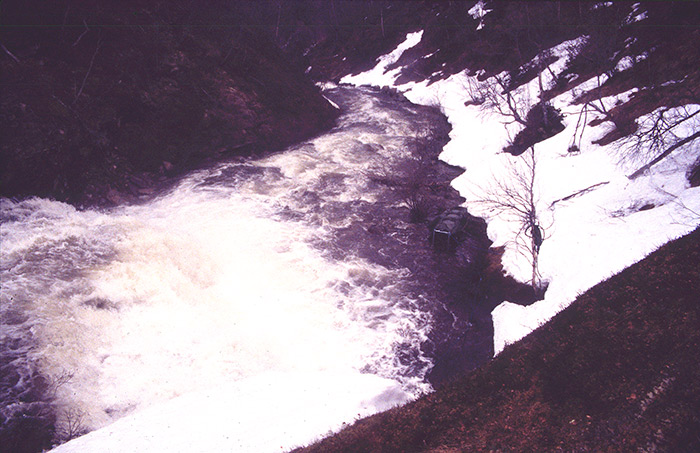
Spring runoff in Rugla river (1997). Metal concentrations in the river spike during runoff episodes, creating bottlenecks for the fish

Rugla river runoff after early autumn intense rainfall

Pål Gundersen in work. Setting up water-level monitoring equipment late winter 1997 when it was still several meters of snow in the area

Rugla river. We had to dig down to find the river
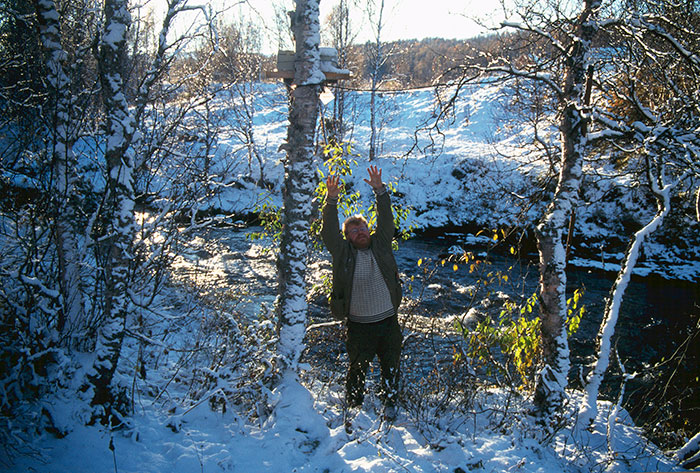
The water-level monitoring data logger in Rugla river after the snow melted ....

Heavy metal speciation monitoring in Rugla river with dialysis bags. Here chemist Pål Gundersen with his equipment
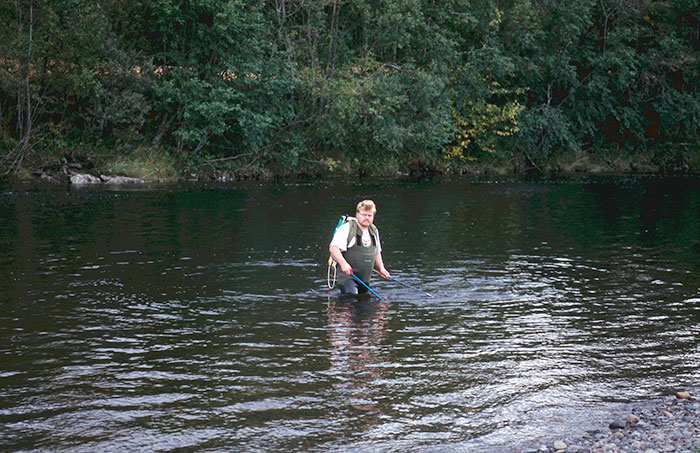
Brown trout electro-fishing in Rugla river

Exposure system in Rugla river, 1997
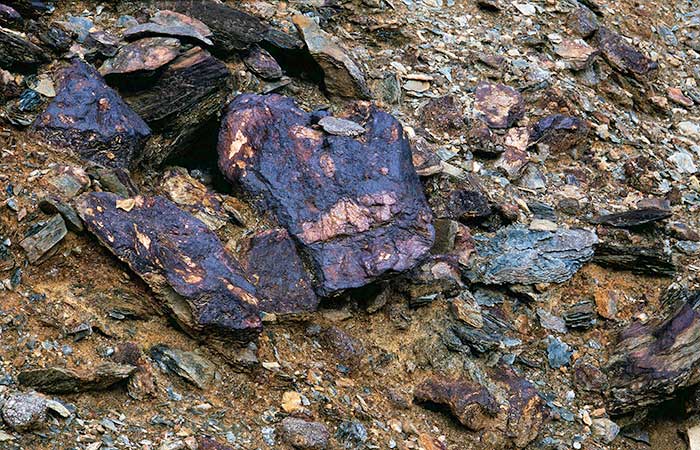
Pyrite-rich mine tailings
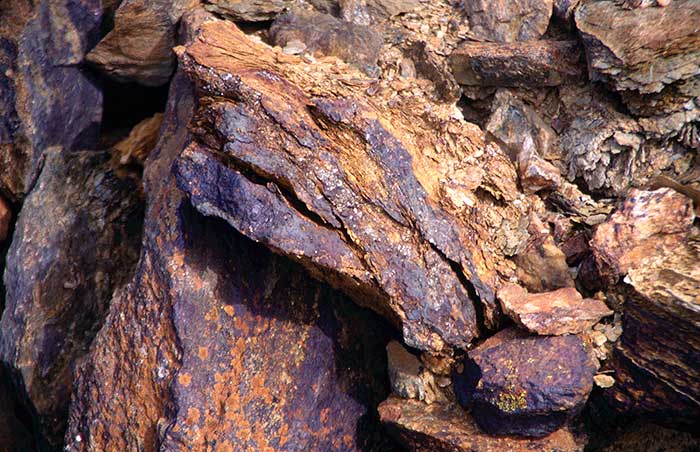
Typical oxidized mine spoil tip rocks

Rolf Arvid Andersen, field work 1998

Lise Kirknes, Karl Erik Zachariassen and Rolf Arvid Andersen
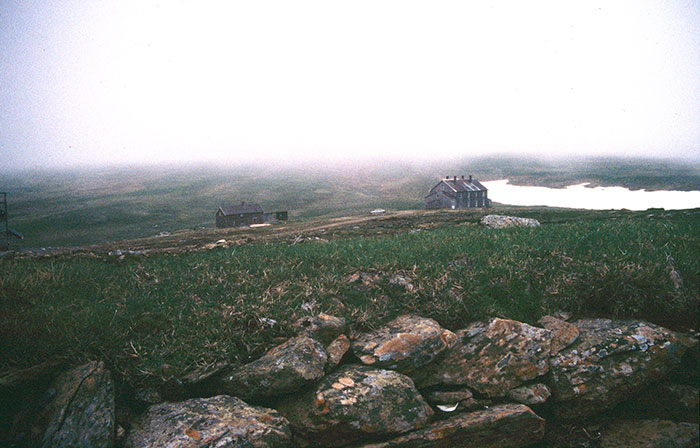
Osbrakka at Killingdal gruve, Holtålen, Sør-Trøndelag. This Cu / Zn ore was operated from 1674 to 1986
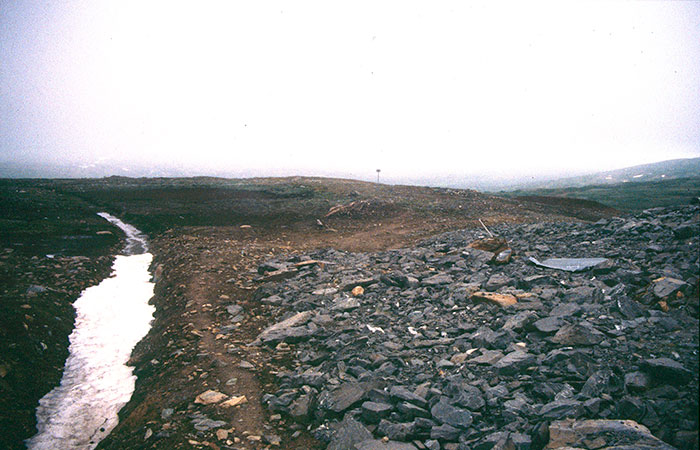
Killingdal gruve. The old tailings have been leveled and covered with crushed rocks

Gilså gruve in Meråker, Nord-Trøndelag, one of the mines we checked out in 1996. Water samples for metal analysis were collected in Gilsåa near Rotvoll

Hyttmoen, Meråker. Here the old spoil tips from the nearby mines have been flattened

Gilså smeltehytte at Hyttmoen. Smelter site for sulfide ore from Bjørneggfjellet, Gilsåfjellet and Lillefjellet gruver

Pål Gundersen collecting a water sample in Grøndalselva (1996), slightly contaminated with metal runoff from Skorovas gruber
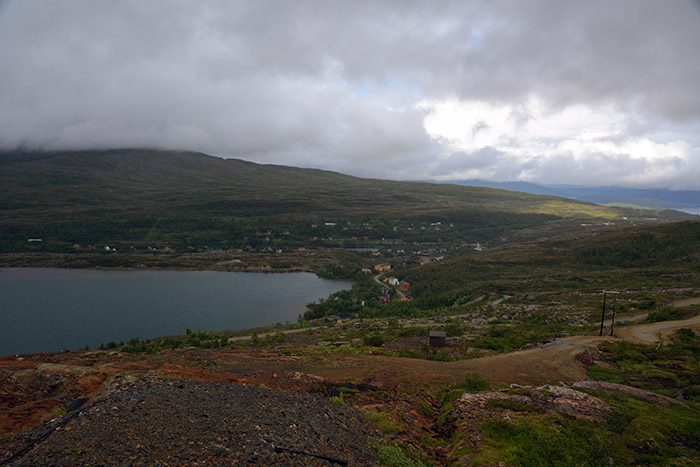
Skorovas gruber in Namsskogan, Nord-Trøndelag

Skorovas gruber. The old mine entrance has been sealed off
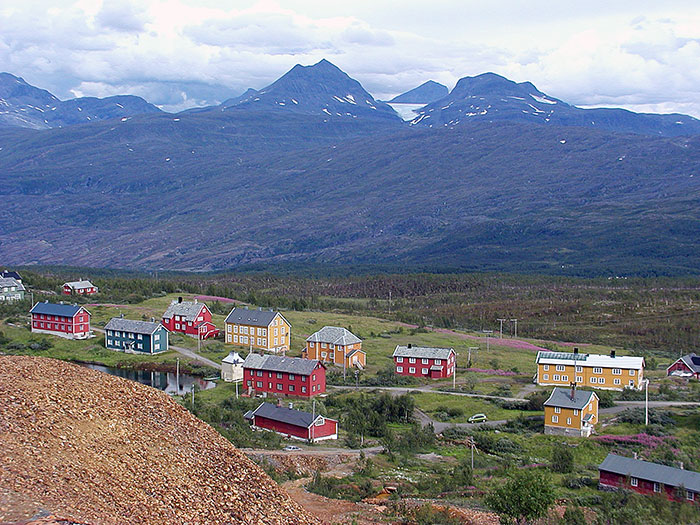
Mine tailings at Jakobsbakken, Sulitjelma, Fauske, Nordland
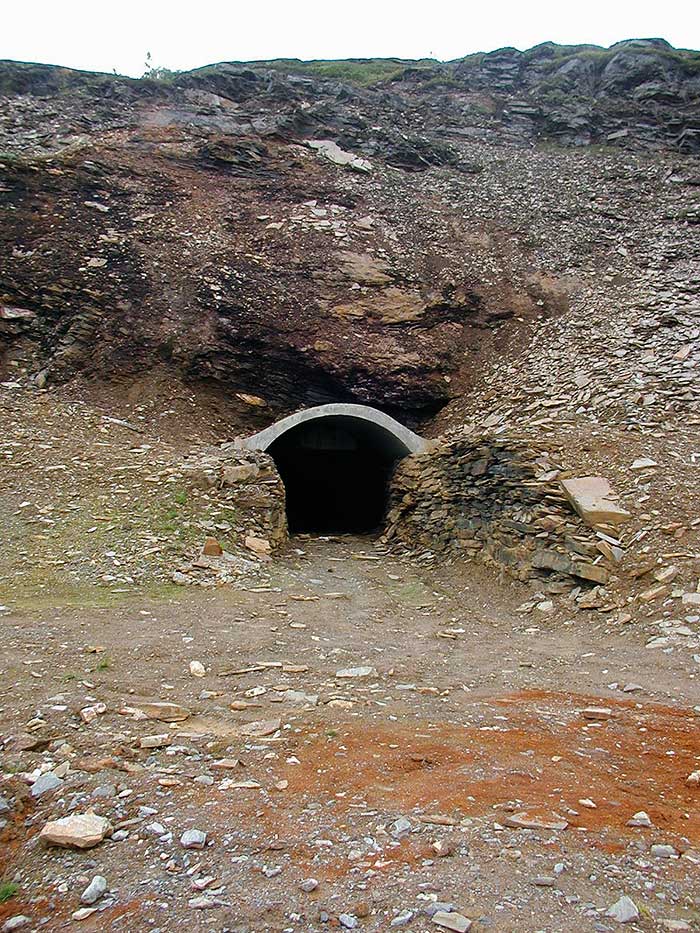
Mine shaft, Sulitjelma (Sulis). Mining in Sulis was conducted between 1887-1991.

Rusted mining equipment, Sulis
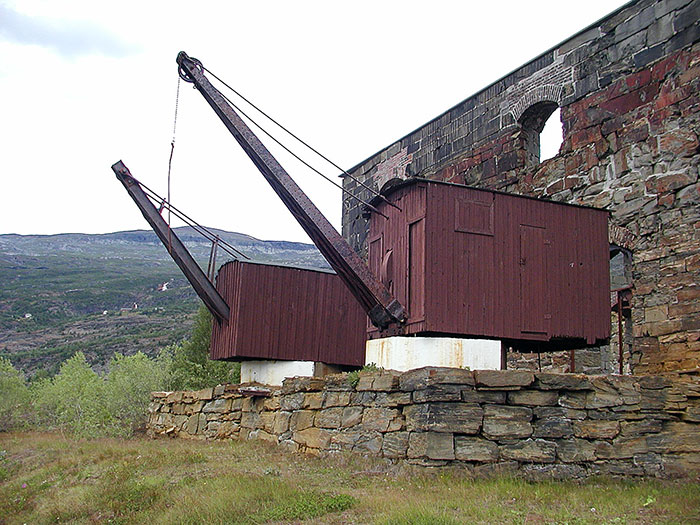
Sulis equipment

Bleikvassli Gruber, closed in 1998. Contaminated resipient (Lille Bleikvatnet, brownish) in the background. Photo 1998
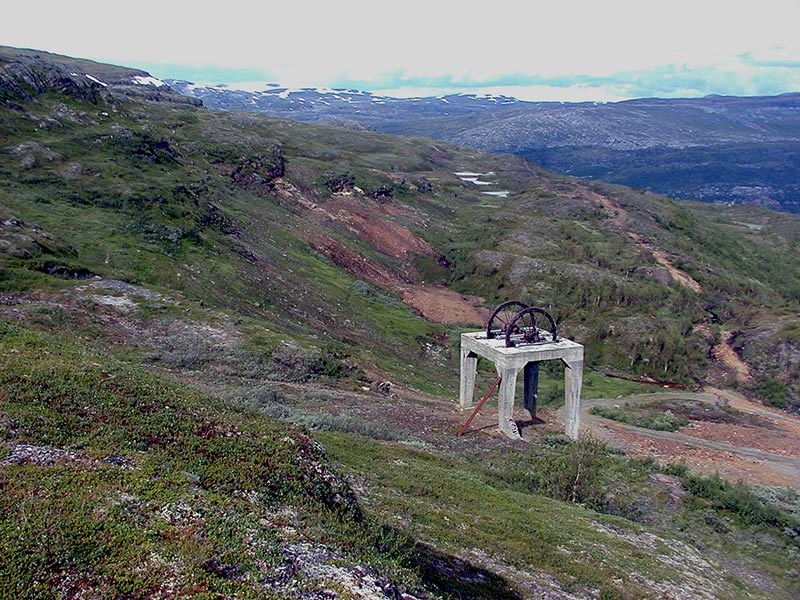
Jakobsbakken mining equipment